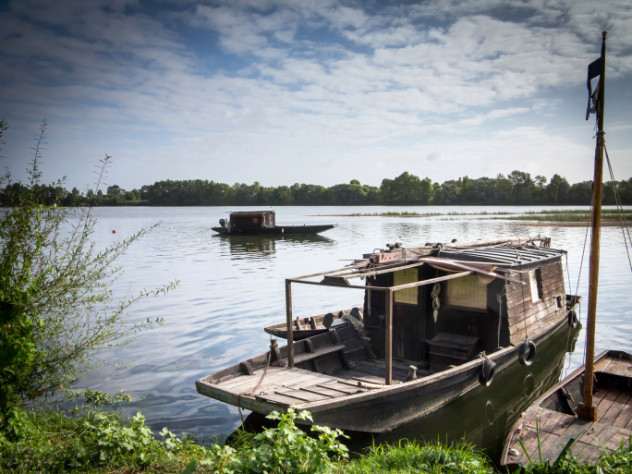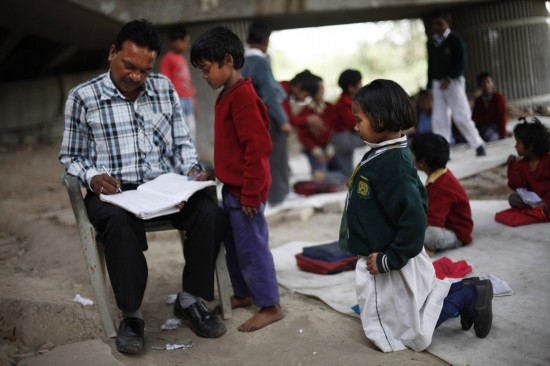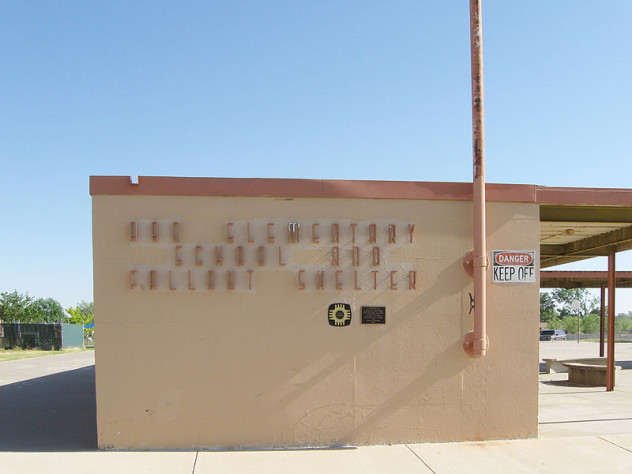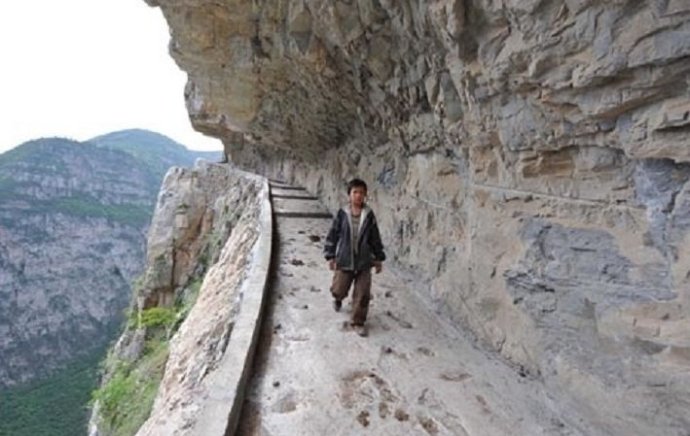(单词翻译:单击)
Most students arrive at school in the morning, bookbag in hand, and return home in the afternoon with an armful of homework and stories from recess. They come back the next day to sit in rows of wooden desks facing a blackboard while the teacher writes down the answers to their assignments in chalk. This is what comes to mind for many of us when we think of schools. However, some schools are a little different than we expect.
大多数学生早上背着书包上学,下午拖着一书包作业和课间听来的故事回家,第二天又回到学校,排排坐在木桌前,面朝着黑板,老师则用粉笔在黑板上写着作业的答案。这就是当我们想到学校时映入我们脑海的景象。然而,有些学校却跟我们想象的有所不同。
10.Dongzhong Mid-Cave Primary School
10.中洞小学

The Dongzhong Mid-Cave Primary School is located in a cave in the mountainous Miao village in Guizhou province, China. Dongzhong itself means "in cave." Guizhou is one of China's poorest provinces and receives very little government support. Instead of using resources to build a free-standing school building, the community started the cave school in 1984 with eight teachers and 186 students.
中洞小学位于中国贵州苗族山村的一个洞穴里,中洞这个名字正是"在洞中"的意思。贵州是中国最穷的省份之一。当地居民于1984年在山洞办学校,而无法建造一座独立的学校大楼,开办之时只有186位学生和8名教师。
Some students spend up to six hours daily to travel to and from the school in the pursuit of knowledge, but some villagers have had concerns about the school being allowed to continue. Their fears were realized 23 years after the school opened when Chinese authorities closed the school. A government spokesperson said that the change was necessary because China isn't a "society of cavemen."
有的学生每天都要花费6小时在往返学校的路上,仅仅是为了追求知识。但是一些村民担心的却是学校是否能被允许继续办下去。在学校开办的23年之后,他们担心的事终于到来了,学校被国家有关部门关闭了。一位政府发言人称,做出这样的决定是很有必要的,因为中国不是原始社会。
9.The Boat Schools Of Bangladesh
9.孟加拉国水上学校

Twice a year, Bangladesh experiences floods which leave millions of its citizens without access to clean water, electricity, and other necessities. It becomes difficult for children to attend schools and for those schools to keep their doors open. To combat the challenges caused by the annual floods, a nonprofit organization called Shidhulai Swanirvar Sangstha came up with a brilliant solution. They built houses, health care centers, and schools that float.
孟加拉国一年内要经历两次洪灾,洪灾会导致数百万居民无法使用净水、电以及其他生活必需品。同时,洪灾使孩子们上学变得尤为困难,学校也因此无法敞开大门。为了应对这一每年两次的灾害所带来的挑战,一个名为Shidhulai Swanirvar Sangstha的非营利组织想出一个绝妙的办法。他们在漂浮的船上建造房屋、医疗中心和学校。
The nonprofit operates almost 100 boat schools. Each of these schools is solar powered and equipped with a laptop computer, Internet access, and a small library. The boat schools are a school and school bus hybrid. Whenever there's a flood and every other service is closed for business, the floating schools are still operational. They pick their students up from docks and riversides, then dock somewhere so that class can begin. After the lessons are through, the boat schools return the students to their homes and another group of students is picked up. About 70,000 children have benefited from the boat schools since they were established in 2002.
这一组织运作着将近100个水上学校,每个学校都采用太阳能,并配备着一台能接入互联网的笔记本电脑和一个小型图书馆。无论何时来了洪水,导致其他商业性服务无法进行,这些漂浮学校仍能照常运作。他们在码头和河岸接学生,然后靠在某一码头再开始上课,课程结束后他们又将学生一个个送回家,再接下一组学生。自2002年水上学校成立以来,已有70,000名学生受益其中。
8.The Train Platform Schools Of India
8.印度站台学校

Whenever Inderjit Khurana took the train to work, she encountered several children begging train passengers for money instead of going to school. Khurana was a school teacher from Orissa, India, and she was sure that these children needed help if they were going to have a future at all. Since it was almost impossible to take these children to school, she decided to take the school to the children. This led to the formation of the Ruchika School Social Service Organization (RSSO) and the birth of the Train Platform School in 1985.
每次当Inderjit Khurana乘火车去上班时,她总能遇到一些孩子在向乘客乞讨,而不是去上学。Khurana是位来自印度奥里萨邦的老师,对于这些孩子,她很清楚地认识到,他们要想拥有自己的未来,必须得到帮助。不过,将这些孩子带去学校几乎是不可能,因此,她决定将学校带来孩子身边。这一想法促成了Ruchika学校社会服务组织(RSSO)的形成,和1985年站台学校的诞生。
Khurana began her project with just one school, but more than 4,000 students are being educated around India through the program. The schools cater to the needs of street children, child laborers, and children from poor families. The children gather between train stops to learn to read and write, and they learn through the use of field trips, flashcards, songs, drama, music, and puppetry. They are allowed to leave the program or resume whenever the choose. Khurana also realized that it would be difficult to educate the children without meeting the needs of their entire families, so the RSSO also provides food and medication.
Khurana开始这一项目时仅成立了一所学校,但是在印度,超过4,000名学生都通过这一项目受到了教育。学校主要是为流浪儿童、童工和贫困家庭的儿童服务。孩子们相聚在火车站台学习读书、写字,并在实地考察、使用抽认卡、唱歌、戏剧、音乐和木偶戏中学习。无论何时加入课程,他们都可以自己决定何时去留。Khurana同时还认识到,如果无法为孩子们的家庭提供帮助的话,教育活动也很难进行,因此,RSSO同时也为他们提供食物和药物。
7.Abo Elementary School
7.Abo小学

Abo Elementary School takes pride in being the first underground school in the United States. At the height of the Cold War as the United States came close to engaging in nuclear warfare with the Soviet Union, President John F. Kennedy swore that he would establish public and private structures that could serve as nuclear fallout shelters. Artesia, a town in New Mexico, felt it would be attacked due to its refinery and proximity to White Sands Missile Range and the now-abandoned Walker Air Force Base. They decided to build an underground school that would also function as a shelter.
Abo小学是美国第一所地下学校,他们以此为傲。在美苏冷战高峰期,美国致力于与苏联的核战争中,肯尼迪总统誓要建立公共和私人的核微粒庇护所。位于新墨西哥州的小镇阿蒂西亚恐会受到打击,因为此地有炼油厂,并且靠近白沙导弹靶场以及现在已被废弃的沃克空军基地。因此他们决定修建一所地下学校,同时也能当做庇护所。
The school is completely underground. A playground was built on its roof. The school has three different entrances, each of which is protected by an 800-kilogram (1,800 lb) steel blast door. It's also equipped with decontamination showers. The school is reportedly capable of resisting radiation and withstanding a 20-megaton blast. In its day, it had a morgue, a generator, a well, its own ventilation system, and stockpiles of food and medication. Despite all of this, many of its students had no idea that they attended elementary school in a bomb shelter. Fortunately, Abo Elementary School was never utilized as a bomb shelter. It was closed in 1995 because of increasing maintenance costs.
学校是完全处于地下的,操场则修建在学校的屋顶上。学校有三个不同的入口,每个入口都有防爆钢门作保护。据报道,学校能够抵抗辐射,并且能承受20万吨级的爆炸。校内配备有一间资料室、一个发电机、一口井、通风系统和备用食物与药品。除开这些,学生们并不知道他们上学的地方是一个炸弹庇护所。幸运地是,Abo小学还从未被真正地用作炸弹庇护所,但是由于平时开销日益增加,终于于1995年关闭了。
6.Gulu Elementary School
6.古路小学

Gulu is a little-known village located in mountainous Hanyuan County, Sichuan Province, China. The only way to get to the village is through the Luoma Way, which is filled with zigzag turns, narrow passages between rock walls, and rickety bridges. Hidden in one of the mountains is the Gulu Village Primary School.
古路村位于中国四川省汉源县的深山里,这座村鲜为人知。进村的唯一道路是一条骡马道,道路曲曲折折,千转百回,窄窄的过道嵌在岩壁和摇摇摆摆的桥之间。古路小学正隐藏在这崇山峻岭中。
The school has been around since the late '80s and is run by a single teacher, Shen Qijun. Qijun came to Gulu Village when he was 18 years old. Back then, the school was in a pitiful condition and didn't even have plumbing. Shen rallied the villagers after a student fell and was injured while trying to get to a toilet elsewhere on the mountain, and they collectively renovated the school—and added a toilet! The renovation also included a basketball court, which was made with unused blackboard. The students have to be careful when using it, though, in case they accidentally throw the ball off the side of the mountain.
学校由一名单身教师从80年代末开办至今,他的名字叫做申其军。申其军来到古路村时才18岁,那时候学校条件相当艰苦。一位学生在山林里方便的时候不慎跌落受伤,申其军于是召集全体村民修复学校,并新修了厕所。学校修复工程还包括篮球场,球场是用没用过的黑板做成。学生们在打篮球时还得多加注意,以防一不小心将球抛到悬崖外。
翻译:张洋 来源:前十网


